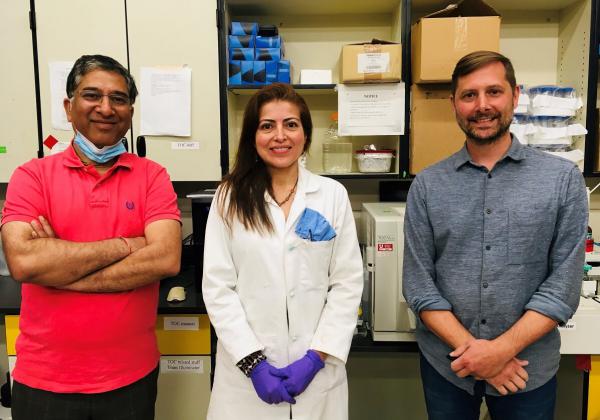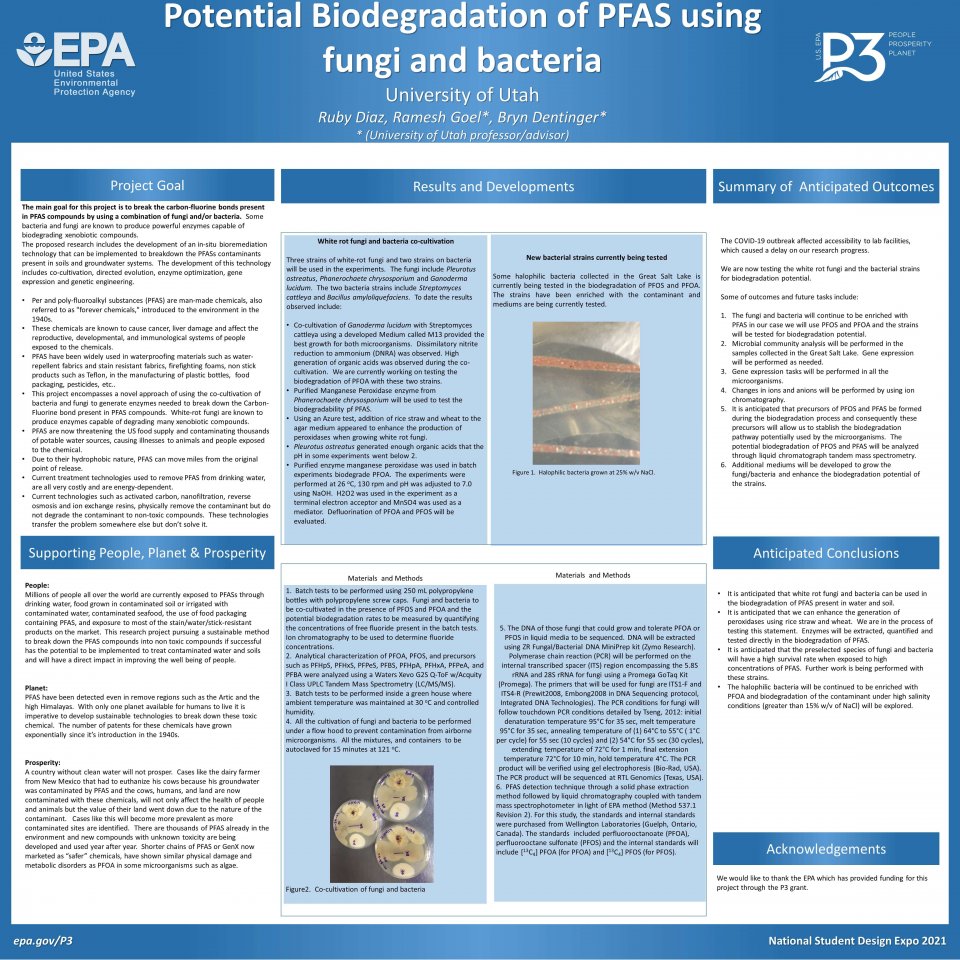2021 P3 Expo - Biodegradation of PFASs from Groundwater and Soil
University of Utah, Salt Lake City, UT

This project consists in co-cultivation of different white rot fungi strains and different bacterial strains and testing what combined microorganisms are capable of producing the enzymes needed to break the Carbon-Fluorine bonds present in PFAS compounds such as PFOS and PFOA.
The team consists of PhD Student Ruby Diaz, Dr. Ramesh Goel (PI) and Dr. Bryn Dentinger (Co-PI).

